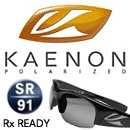
|
|
Scuttlebutt News:
(December 3, 2009) When Rory Ramsden, COO for the RS:X Class Association, distributed a report on the testing program that the class was conducting on the equipment being used for the Olympic boardsailing event, Scuttlebutt was curious how this one design class intended to evolve: The RS:X was selected by ISAF after tests that they themselves conducted in 2004 to find a replacement for the then existing Olympic equipment - the Mistral One Design that had been used in 1996, 2000 and 2004. The RS:X is a hybrid design based on the short wide style used by the Formula Windsurfing Class but with a centre board. The RS:X equipment was used in 2008 with great success and was selected again by ISAF for use in 2012. So the RS:X is equipment designed and built specifically to meet ISAF's requirements for use in the Olympic Regatta. It has a 100% carbon mast and high spec carbon boom. The hull is built on a unique production line. No other equipment is built on the same line. The 2008 Olympic Gold medallist won the RS:X World Championships in Takapuna, New Zealand on a three year old board so they are built to last. The tolerances on the hulls were tightened considerably leading up to the 2008 Olympic Regatta in Qingdao. This has resulted in hulls being very much the same 'speed'. How often a racer feels 'the need' to replace a hull is between him and his maker. How often 'must' a racer replace a hull is down to how well it has been looked after. However, if you said 18-24 months, you would not be far wrong. The RS:X Class is working closely with Neil Pryde Windsurfing to achieve an 'Evolution' in the performance of the RS:X hull without changing its existing shape, durability or longevity. The mould remains the same. The hull may just get lighter. The 2009 RS:X Annual General Meeting (AGM) approved a submission to carry out a feasibility study to find out whether this is possible without resorting to exotics which could make the hull more expensive. Given Class AGM approval, the RS:X Evo hull would be introduced on January 1, 2013.
RS:X Evo 1 is being tested now. Evo 2 is on the way. Given feedback from top racers round the world, modifications can then be made before a further submission is made to the class AGM. By the 2012 Olympics, the RS:X Class will have been 'in' for 8 years. The first quad was a steep learning curve for all involved. Neil Pryde did a fantastic job of producing tightly controlled one design equipment for the 2008 Games. The racers were blown away by how equal the performance was between all 70 sets supplied. We bid for 2012 based on 'stability' to give everyone the breathing space to benefit from their existing investments in the 'new' equipment. The class is therefore considering the possibility of making an evolution in 2012 in just the same way as the 49er class introduced their new carbon rig. Before the RS:X AGM can make a decision it has to perform due diligence. This is what we are doing. As for the future of the class, we are proposing a policy of 'Evolution NOT Revolution' to the ISAF. Each time there is a change to Olympic windsurfing equipment, MNAs everywhere have to write off their existing investment and start all over again. This can only benefit the rich nations with the money to get up and running again quickly. The less fortunate MNAs take a long time to get back into the game. Evolving the equipment will mean that national programs can make an evolution too. Announcing this early [2009] means that MNAs can plan their expenditures and Neil Pryde can match production to the anticipated demand. So what happens to the 'old' hulls? We are working on a plan which will extend their useful life beyond 2012 and therefore allow a continued ROI on money already spent. More on that when it is approved by the class AGM. The RS:X Class has a strategy of steady evolution based on each quadrennial so... 2004- 2008 The RS:X and Neil Pryde work hard on tightening tolerances and making the Class Rules as bullet proof as possible. 2008 - 2012 Stability - Focus on developing a team of ISAF approved international equipment inspectors and supporting developing racers and MNAs through the Reach-4-The-Top Training Programs. 2012- 2016 Subject to RS:X Class AGM approval, the introduction of a new lightweight hull made in the same mould as the existing RS:X but weighing no more than approximately 13kgs (current hull weighs 15.5kgs). The aim is to maintain durability, longevity and the existing hull shape whilst offering ROI on 'old' hulls so that investments already made are not lost. 2016 -2020 Subject to RS:X Class AGM approval, the introduction of a new sail possibly on the same mast and using the same boom. The staged development of the equipment will allow MNAs to plan their expenditure and achieve maximum ROI on their investment whilst allowing the RS:X Class to develop and strengthen the Youth racing scene as well as assist developing nations leverage their budgets to offer their racing squads the best coaches available through the Reach-4-The-Top Training program. This latter provides top quality coaches at the most cost effective daily rates possible. It is a not-for-profit initiative introduced by the RS:X Class in February 2009. Following discussions with the other windsurfing classes, the R4T is now generic and supported by all ISAF windsurfing classes so offers training camps at course racing, slalom, freestyle and wave performance events. Each participant [max 6 per camp] pays an equal share of the daily cost of a coach specifically selected for that championship by the class involved. The hull has already been under the feet of a range of sailors both men and women, and it has been found to be lively and more of a challenge to sail. The board is without doubt faster across a range of conditions. Downwind it is a little faster but not as apparent as the upwind speed difference in planning conditions. Still more testing has to be done in displacement conditions where performance is likely to be much the same as the existing hull. The interesting moment will come in marginal wind speeds when it is likely to be quicker to plane. So far the Evo is proving structurally sound but more time needs to be spent with the centre board down so that the area around the box gets stressed.  
Photos provided by RS:X Class Association website. back to top |







|



